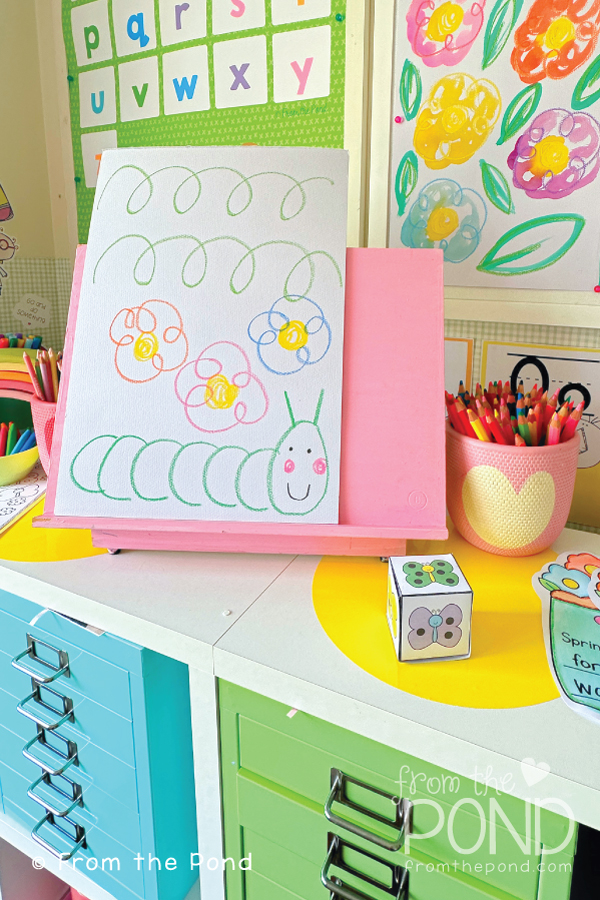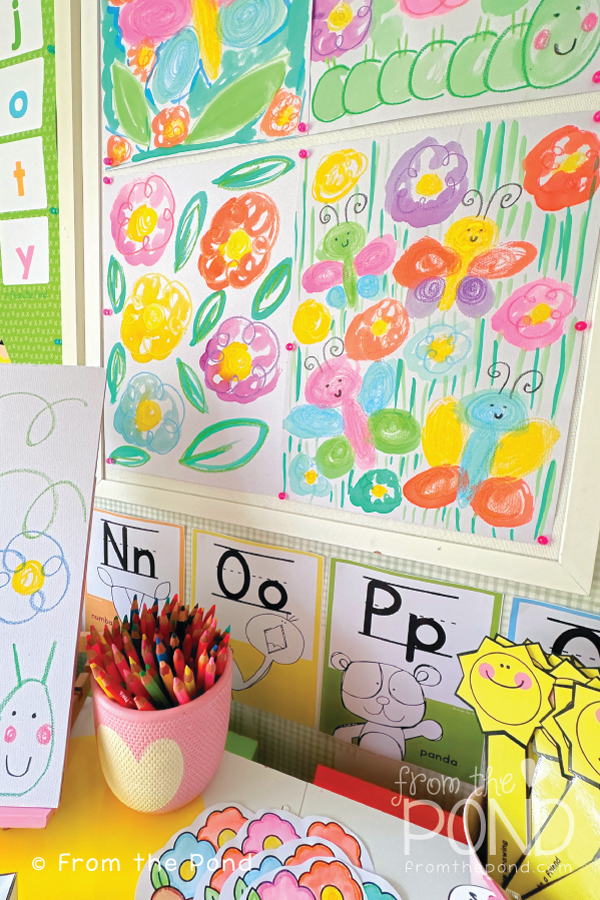Practicing different lines and patterns with fluency helps children
- develop the fine motor skills necessary for writing
- learn the circular motion ready for letters like e, o, p, a, c and more
- strengthen the muscles in the fingers, hands, and wrists
- develop spatial awareness and coordination.
After some practice with a loop pattern across a large sheet of paper (ideally on an upright easel to allow for big arm movement) your children can make some pictures from loops - like flowers and foliage around a caterpillar or butterflies.
Incorporating line and pattern drawing into your classroom routine is a fun and effective way to support your students' writing development. Here are a few ideas to get you started:
- set up a "drawing center" in your classroom with a variety of materials, such as markers, crayons, and play dough - display some art or drawing ideas that students have created to guide imagination
- encourage students to draw lines, patterns, and shapes during free time and during literacy centers and rotations
- se line and pattern drawing as a warm-up activity before writing lessons
- incorporate line and pattern drawing into your writing lessons by having students trace, copy, and create their own patterns or use tracing pages as a guide
You may also like:



